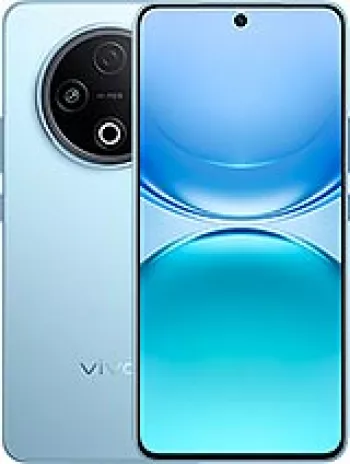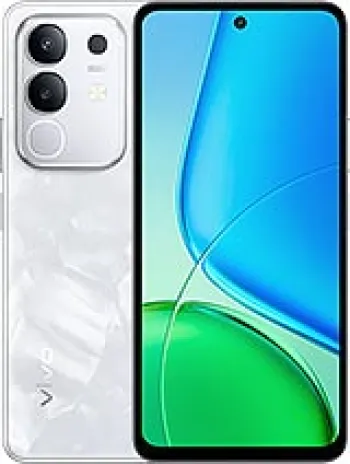
Network
The Vivo Y51, launched in December 2015, supports multiple network technologies including GSM, HSPA, and LTE. This versatility allows users to experience good connectivity across different regions. The device is built to handle 2G bands (GSM 850/900/1800/1900 - SIM 1 & SIM 2), 3G bands (HSDPA 850/900/2100), and 4G bands (LTE 850/900/1800/2100/2600 - Malaysia). With network speeds of HSPA 42.2/5.76 Mbps and LTE Cat4 150/50 Mbps, users can enjoy relatively fast internet browsing and data download capabilities.
Launch
The Vivo Y51 was announced and subsequently released in December 2015. Although it was eventually discontinued, it made a significant impact during its availability due to its balanced features and affordability. The phone provided users with essential smartphone functionalities at a competitive price during its time.
Body
With dimensions of 143.8 x 71.7 x 7.5 mm and weighing 157 grams, the Vivo Y51 offers a sleek and lightweight design. Its size provides ease of use and a comfortable grip, making it suitable for one-handed operation. The device also features a Dual SIM configuration, allowing users the convenience of managing two phone numbers on a single device.
Display
The smartphone comes equipped with a 5.0 inch IPS LCD display, offering a resolution of 540 x 960 pixels. This results in a screen-to-body ratio of approximately 66.8% and a pixel density of about 220 ppi. While not the highest resolution available, it provides decent clarity and vibrant colors for viewing media, apps, and browsing the web.
Platform
Powered by the Qualcomm MSM8916 Snapdragon 410 chipset, the Vivo Y51 is built with a Quad-core 1.2 GHz Cortex-A53 CPU and Adreno 306 GPU. This combination delivers satisfactory performance for everyday tasks such as social media, browsing, and light gaming. The device operates on Android 5.0.2 Lollipop with Vivo's Funtouch 2.5 user interface, providing a user-friendly experience with customized features.
Memory
This device offers 2GB of RAM, which, while modest by today's standards, was quite reasonable for 2015, allowing for decent multitasking capabilities. It comes with 16GB of internal storage, which can be expanded via a dedicated microSDXC card slot, giving users additional space for apps, photos, and media.
Main Camera
The Vivo Y51 features an 8 MP rear camera with autofocus, supported by features like LED flash, HDR, and panorama mode. The camera is capable of capturing 1080p video at 30fps, allowing users to document their experiences with relatively high-quality images and videos.
Selfie Camera
For selfie enthusiasts, the device includes a 5 MP front-facing camera. It also supports 720p video recording, making it suitable for video calls and social media content creation.
Sound
The Vivo Y51 comes with a built-in loudspeaker and a 3.5mm headphone jack, catering to users who enjoy listening to music or watching videos without needing wireless or USB Type-C audio solutions.
Comms
On the communication front, the device supports Wi-Fi 802.11 b/g/n with hotspot functionality, Bluetooth 4.0 with A2DP, GPS with support for GLONASS and BDS, and FM radio. Although it does not support NFC, it has a microUSB 2.0 port for charging and data transfer.
Features
Additional features include various sensors such as an accelerometer, proximity sensor, and compass, which enhance the overall user experience by providing added convenience and functionality.
Battery
The Vivo Y51 is equipped with a non-removable Li-Ion 2350 mAh battery. While it might not offer the longest battery life, it is adequate for moderate daily usage, allowing users to perform standard tasks without needing frequent recharges.
Miscellaneous
The device was available in white and had various model numbers including Y51L, Y51, 1707, and Y51A. At launch, it was priced at approximately 130 EUR, making it an affordable option for users looking for a budget-friendly smartphone.
Key Features of vivo Y51 (2015)
- Supports GSM, HSPA, and LTE technologies for reliable connectivity.
- Slim design with dimensions of 143.8 x 71.7 x 7.5 mm and a lightweight body of 157 g.
- Dual SIM capability for flexible network usage.
- 5.0-inch IPS LCD display for vibrant colors and clarity.
- Powered by Qualcomm Snapdragon 410 chipset with a Quad-core 1.2 GHz Cortex-A53 CPU and Adreno 306 GPU.
- Ample storage with 16GB internal memory and 2GB RAM, expandable via dedicated microSDXC slot.
- 8 MP main camera with autofocus, LED flash, HDR, and panorama features, supporting 1080p video recording.
- 5 MP selfie camera capable of 720p video recording.
- Classic 3.5mm audio jack for standard headphone compatibility.
- Equipped with Bluetooth 4.0, Wi-Fi 802.11 b/g/n, hotspot capabilities, and FM radio.
- Navigation support via GPS, GLONASS, and BDS.
- Includes essential sensors such as an accelerometer, proximity sensor, and compass.
Vivo Y51 (2015) Drawbacks
- Low screen resolution of 540 x 960 pixels, resulting in a pixel density of approximately 220 ppi, which may affect display clarity and sharpness.
- Outdated Android version 5.0.2 (Lollipop), which may not support newer applications and security updates.
- Limited internal storage of 16GB, which may not suffice for users storing large media files or apps.
- Modest RAM capacity of 2GB, which could lead to sluggish performance in multitasking and running more demanding applications.
- The Snapdragon 410 chipset is relatively old and may not handle the latest apps and games efficiently.
- No NFC support, which limits mobile payment options and other NFC-based functionalities.
- Non-removable battery with a relatively modest capacity of 2350 mAh, possibly requiring frequent recharging.
- Absence of advanced sensors like a fingerprint reader for enhanced security features.
- Discontinued status, meaning no official support or software updates from the manufacturer.


View Also
More Phones
All Rights Reserved +14300 Phones © Mobilawy 2025

























